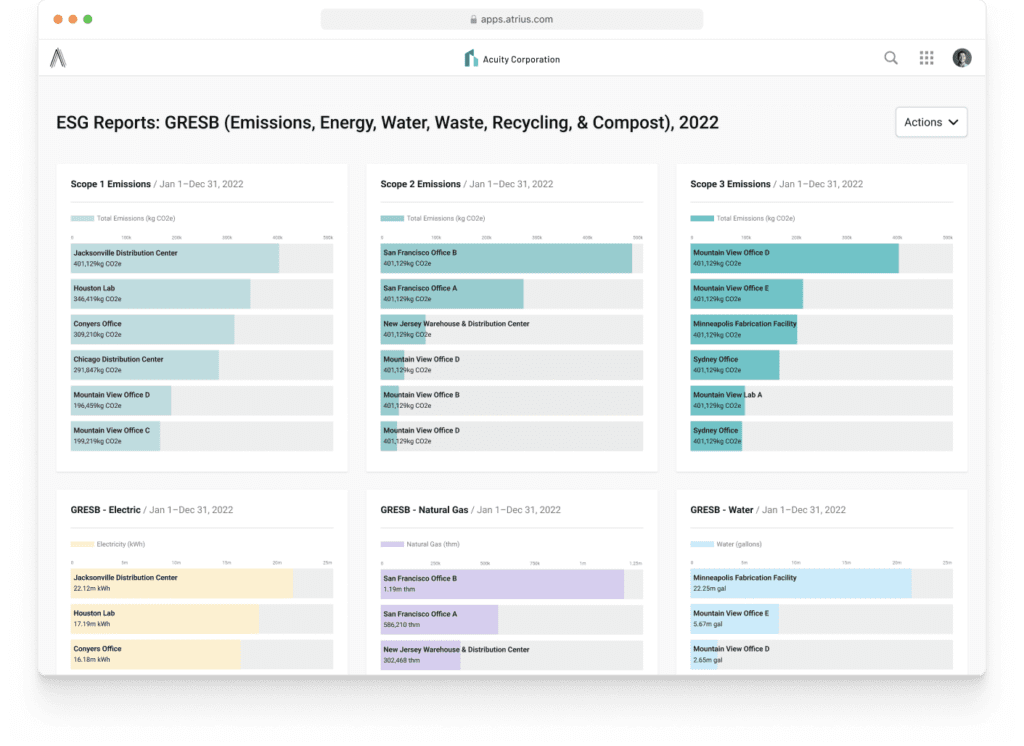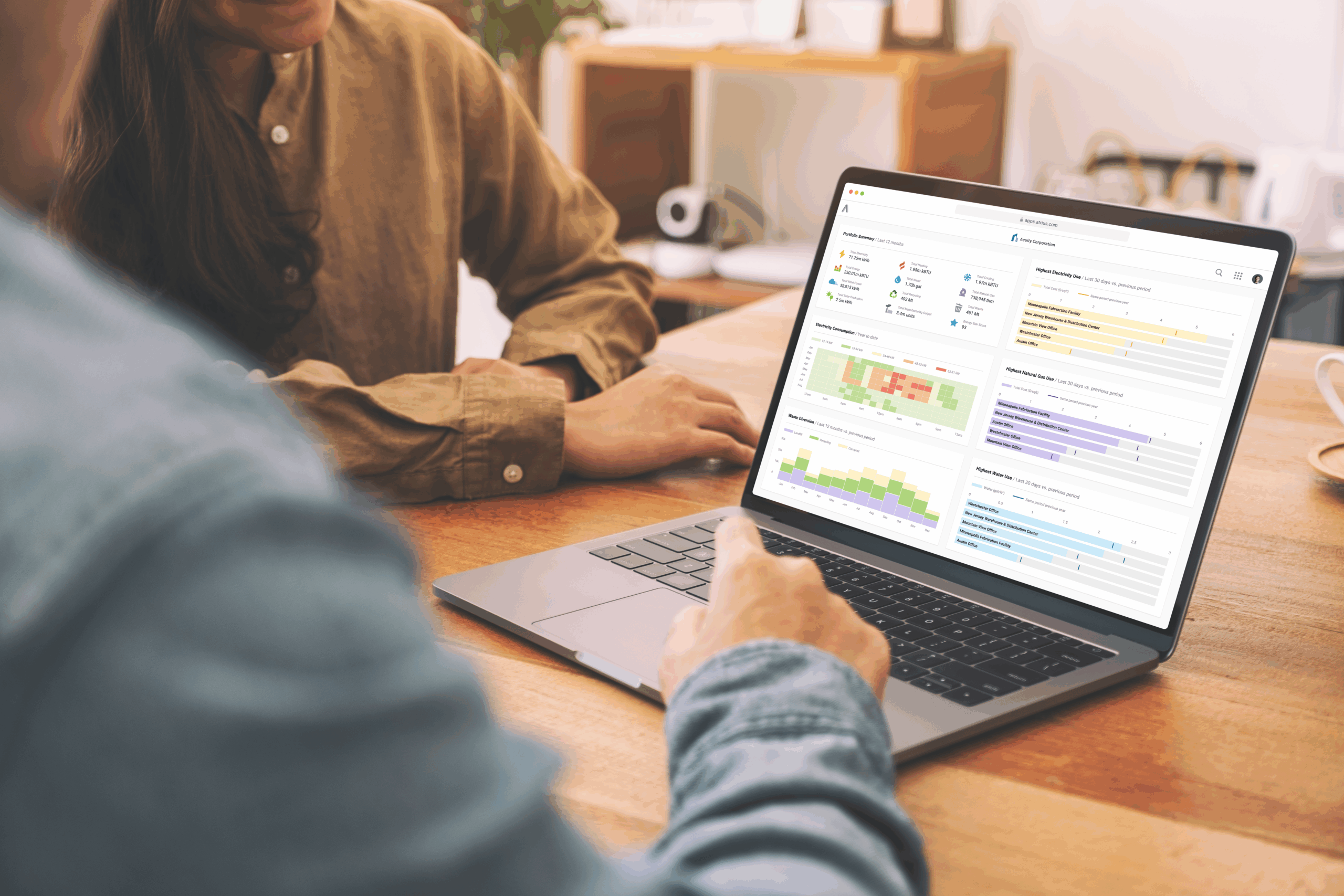Background
Calculating carbon emissions is a massively complex and time-consuming process involving stakeholders from multiple departments and volumes of data from various sources. Despite pending SEC compliance requirements that could affect all publicly traded companies, recent studies show that nearly half of all companies are still collecting building data manually1, and more than one-third are using spreadsheets to measure and verify their data.2
Manually aggregating energy cost and consumption data across a portfolio of buildings is an inefficient, resource-intensive, and costly process – and it’s just the first small step in calculating carbon emissions. Tracking in spreadsheets increases the potential for human error and prevents sustainability professionals from investing their time in strategic resource reduction and optimization programs.
The Challenge for a Fortune 500 Insurance Company
Organizations of all sizes face increasing pressure from investors, supply chain partners, and federal and local regulators to be more transparent in collecting and reporting emissions data. For this client, a Fortune 500 insurance company with over 10,000 employees and dozens of buildings, preparing emissions reports for end-of-year financial statements is a year-round task with tremendous challenges.
With multiple source inputs for Scope 1, 2, and 3 data requiring manual entry into spreadsheets, the company was stuck in archaic, time-consuming processes to generate compliant sustainability reports. They required an auditable solution to centralize data, automate workflows, and eliminate the need to convert resource-use data into emissions data manually.
Automation from the Atrius Platform has allow us to focus our time on carbon reduction instead of carbon calculation.
– Energy Manager
The Solution
With the help of Atrius® Sustainability and Atrius® Energy, the insurance company consolidated utilities, budgets, and building information into one platform. By leveraging APIs and integrations that automatically pull resource consumption data directly from the world’s top utility providers, they eliminated the need for manual input and significantly reduced the possibility of human error.

The platform automatically converts resource use data into Scope 1, Scope 2, and Scope 3 emissions using standard factors from the EPA, UK DEFRA, and more. Using customizable dashboards and reports, the insurance company can see emissions trends and breakdowns by resource, scope, building, and building group, which allows them to identify top opportunities for improvement. Furthermore, working with Atrius, the client has created 12-month rolling, and year-to-date portfolio roll-ups for sustainability reports, financial statements, and informing internal and external stakeholders.
The company leveraged our partnership with Apex Companies, LLC to ensure reliability in reporting and compliance with assurance requirements. The client was able to save additional time and money by leveraging features of the Atrius solution to provide Apex access to their platform and reporting data.

The Results
The company now has a streamlined and automated workflow for collecting and converting resource-use data into third-party audited emissions data. Most importantly, they have peace of mind in the quality of their reporting. These insights enable more confident and informed decisions regarding sustainability programs and business in upcoming years.
The way the industry has been trending over the past few years, all eyes are looking towards efficient carbon data management solutions. Automating the emissions app has been a huge, huge win for us.
– Energy Manager



